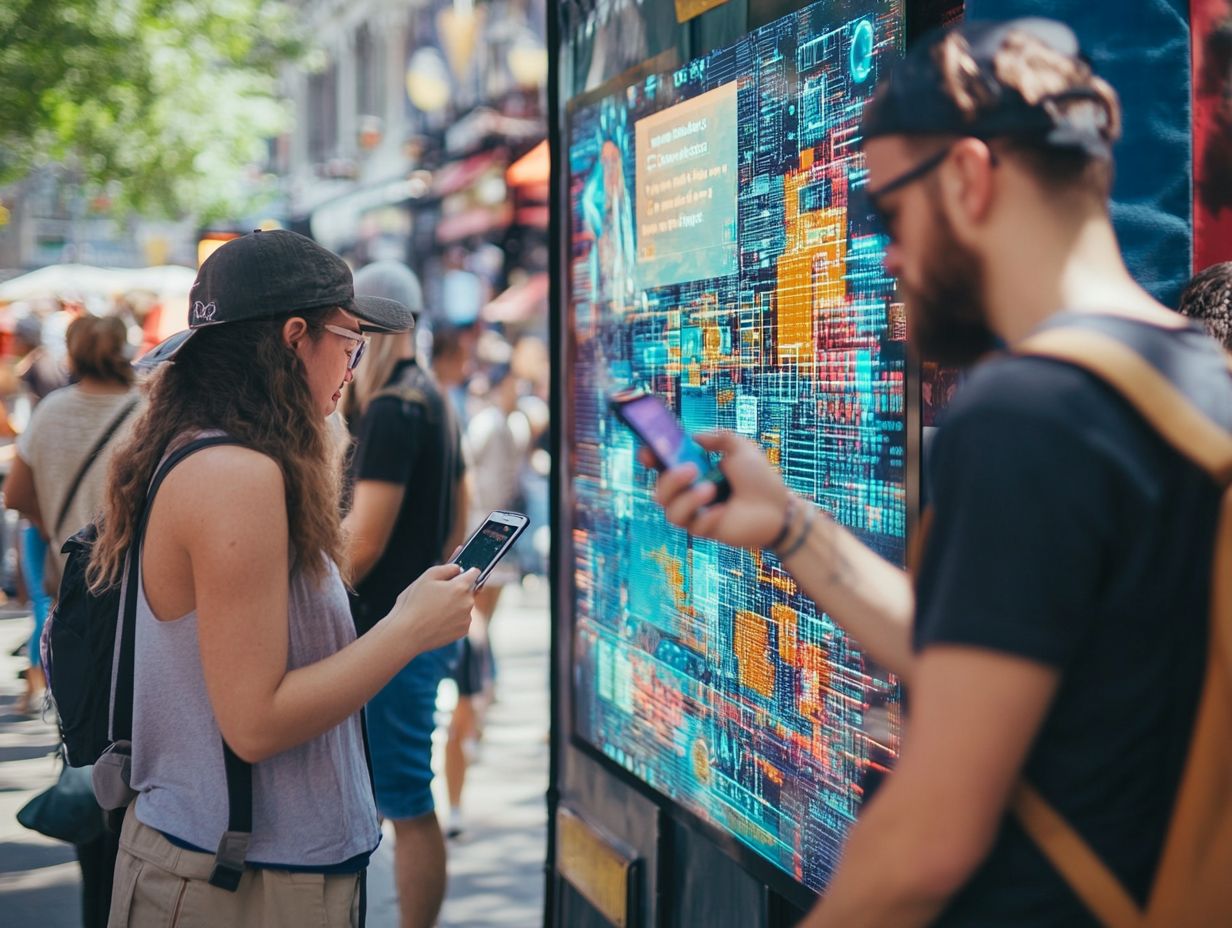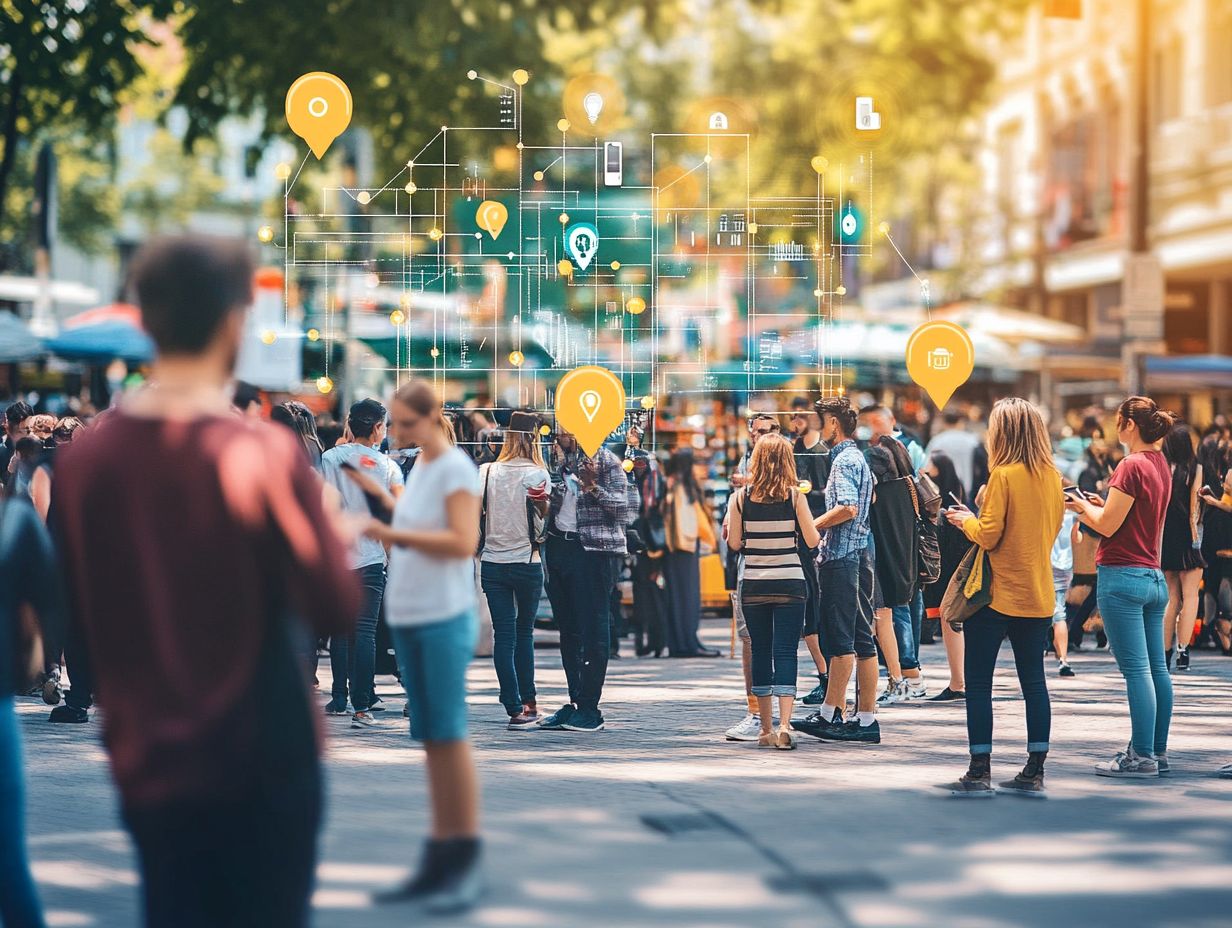Location data has emerged as a fundamental element in understanding consumer behavior, user interaction data, and evaluating the success of events, providing valuable customer engagement and audience profiling insights. By examining what location data is, how it is collected, and its impact on user demographics, you can uncover valuable customer insights that can inform your strategic planning and digital marketing strategies. This article will guide you through the essential metrics to track, including engagement metrics and attendance tracking, enabling you to assess the effectiveness and event performance of your events. Furthermore, you will discover innovative strategies for leveraging this data to enhance audience engagement and event participation, transforming insights into actionable results for user engagement strategies that resonate with your attendees.
Understanding Location Data

Location data is essential for contemporary event planning and marketing strategies, serving as a powerful tool in geospatial analytics that offers insights into attendee behavior, demographic analysis, audience engagement, and event demographics.
By leveraging this location intelligence, event organizers can make data-driven decisions that enhance user experience, optimize venues, and improve overall event success. This type of data provides stakeholders with visualizations of patterns and trends that facilitate the planning and execution of events.
Geographic data collection methods, such as mobile tracking, mobile analytics, and location-tracking apps, are crucial for obtaining accurate information about foot traffic, spatial data, and audience segmentation, which are vital for market research.
What is Location Data and How is it Collected?

Location data refers to information that identifies the geographic position of an individual, event, or item. This data is collected through various means, including Global Positioning Systems (GPS), mobile phone tracking, and geographic information obtained from social media analytics and interactions.
Location data is classified into two categories: real-time data, which is continuously updated, and historical data, which provides insights based on previous location movements, location trends, and qualitative data analysis.
Many delivery services and ride-hailing apps utilize real-time location tracking and geofencing to offer their customers the quickest and most efficient service, enhancing user experience and conversion rates. In contrast, analyzing historical data can help organizations identify changes in customer behavior over time, allowing them to tailor their marketing and service offerings accordingly.
The collection and interpretation of location data are facilitated by location tracking applications and advanced data measurement tools, such as sensors, mapping software, and predictive analytics, which enhance decision-making across various contexts.
Measuring Event Success with Location Data

As part of measuring event success through location data, various engagement metrics, performance metrics, and event KPIs are analyzed to gain insights into attendee behavior and overall participation, aiding in outcome measurement. This analysis ultimately informs event optimization and engagement optimization.
Performance tracking and data visualization techniques are employed to evaluate the effectiveness of marketing strategies, enabling informed, data-driven decisions for enhancing future events and improving event outcomes.
When assessing event success, the analysis of location data leverages engagement metrics such as foot traffic patterns, audience segmentation, and social media engagement to understand how attendees interact with different aspects of the event.
The value of location data lies in its ability to provide valuable context for identifying location patterns and trends and correlating them with event ROI and satisfaction metrics.
Key Metrics to Track Using Location Data

Key metrics to track using location data include engagement metrics such as attendee behavior patterns, event attendance rates, and audience segmentation. Together, these metrics facilitate robust event analysis.
They should be used alongside foot traffic analysis, heat maps, and event feedback to gain valuable insights into attendee movement, dwell times, and satisfaction metrics in various areas of the event venue.
When collected in real-time through mobile applications, online engagement, and other tracking devices, this data enables organizers to understand how attendees flow through the event, identify user journeys, and pinpoint where they are most engaged.
Additionally, survey feedback and audience feedback serve as other crucial data points, offering a direct channel for attendees to share their opinions and satisfaction levels regarding the event.
These quantitative and qualitative metrics not only help track progress against established engagement KPIs but also serve as essential inputs for future refinements, audience insights, and overall event ROI, thereby assisting planners in making data-driven decisions.
Using Location Data to Improve Engagement
Enhancing engagement through the utilization of location data involves implementing event marketing strategies, event promotion, and location-based marketing techniques that leverage audience insights to improve user experience and foster deeper connections with event participants.
By understanding who attends an event, analyzing behavioral data, and analyzing their user behavior, event marketers can tailor their strategies to provide a more personalized and impactful experience. Additionally, location intelligence and audience analytics can identify engagement trends, allowing for real-time adjustments and engagement optimization during the event.
Integrating interactive mapping and business intelligence tools can further help map the customer journey, enhance user retention, and maximize audience retention.
Strategies for Utilizing Location Data to Enhance Engagement
Strategies for utilizing location data to enhance engagement include leveraging location intelligence and audience analytics to gather audience insights and employing behavioral analytics to create personalized event experiences, fostering user demographics engagement.
By using real-time location data and event analytics, event managers can send targeted communications and personalized alerts to attendees, directing them to specific booths or sessions that align with their preferences, enhancing their engagement experience. This approach not only increases foot traffic and engagement rates but also fosters a sense of connection with the event location and enhances community engagement.
Additionally, incorporating interactive experiences and elements like location-based gamification can further engage attendees by encouraging them to explore different areas and interact with sponsors, boosting social engagement. These tactics are crucial for improving event outcomes, event satisfaction, and significantly enhance attendee satisfaction by creating a more dynamic and responsive environment, promoting brand loyalty.





